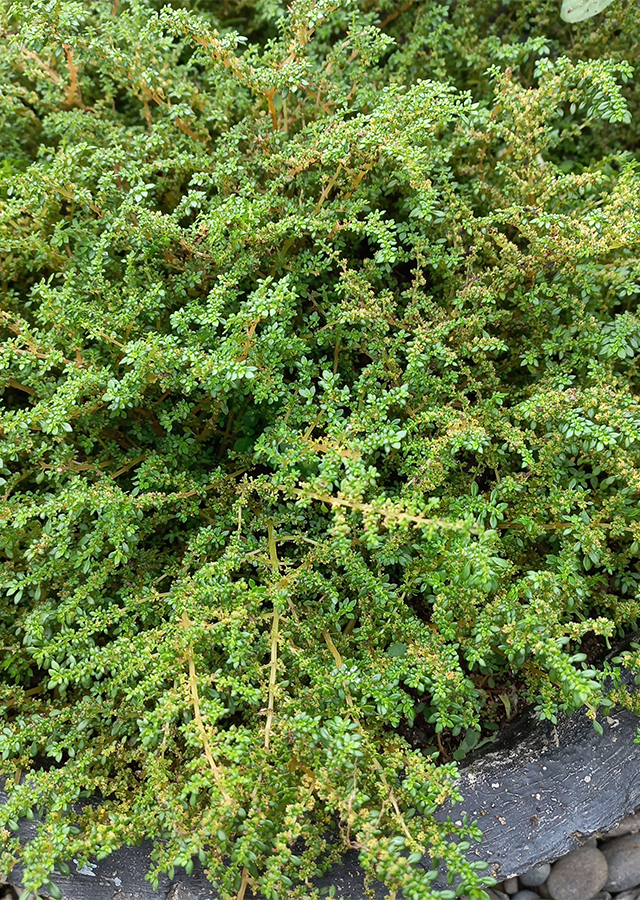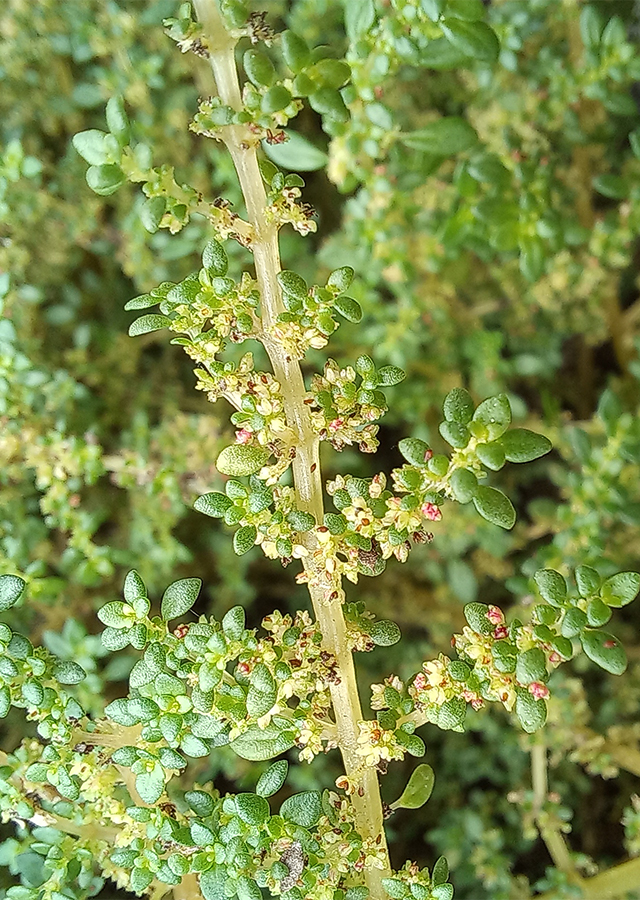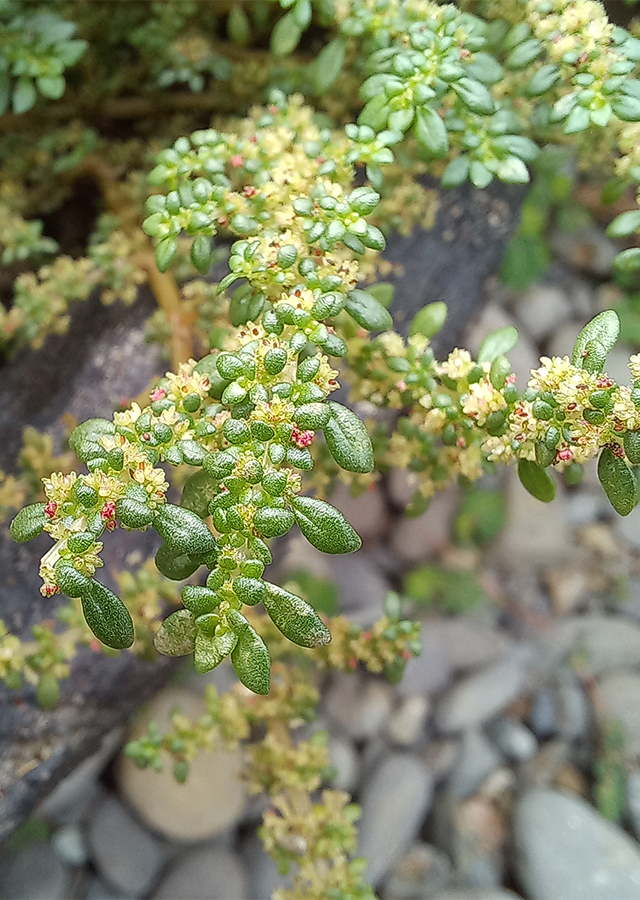Artillery plant
Pilea microphylla (L.) Liebm.
Urticaceae
Location in our garden
Beneficial Weed



Synonym
Dubrueilia microphylla (L.) Gaudich.
Parietaria microphylla L.
Pilea muscosa var. microphylla (L.) Wedd.
Habitus
Herbaceous. Artillery plant is a small, soft, smooth herb, short life cycle (1 - 3 years), and 30 centimeters or less in height.
Part Used
Leaves
Stem
Growing Requirements
Need Shade
Habitat
Roadside
Rocky Areas
Terrestrial
Overview
Artillery plant native from Mexico to northern South America and Peru, SE. AS. to the Caribbean. It is now found in most tropical countries. This plant has a unique appearance so many people cultivate it as an ornamental plant. This plant has also been investigated and found to have antioxidant, antidiabetic, radioprotective, antimicrobial, cytoprotective, antigenotoxic, antidepressant properties and is used as a traditional herb in several countries, such as in western Panama, stem decoction drunk for diarrhea, in Trinidad and Tobago, leaves used for inflammation and as womb cleanser, as well as in Jamaican and Chinese medicine, used for diabetes.
Vernacular Names
Artillery fern, Artillery weed, Gunpowder plant, Military fern, Pistol plant, Rockweed (Engl.), Tou ming cao, Xiao ye leng shui ma, Xiao ye leng shui hua (Chinese), Katumpangan, Akar nasi, Jalu-jalu bobudo (Indonesian), Kogeme-mizu (Japanese), Katumpangan (Malaysian), Du thé bethelmay (Trinidad), Ph[as]o b[oo]ng, L[aw]n t[aw]n (Vietnamese).
Agroecology
Prefers a position in partial shade. Requires a moist but well-drained soil, and can tolerate short periods of soil inundation. Tolerant of a range of soil types.
Morphology
- Roots are tapped and branched, so that they are like whitish fibrous roots.
- Stems are slender, angular, green with a tint of purple, and angular.
- Leaves occur in two rows, petioled, somewhat elliptical in shape, 2 to 5 millimeters in length.
- Flowers are very small and crowded in small inflorescences (cymes) which are greenish or tinged with red and less than 1 millimeter in length.
- Seeds are very small, brown in color.
Cultivation
Propagate by stem tip cuttings root easily
Chemical Constituents
Flavonoids quercetin (reported DPP-IV inhibitor), rutin, chlorogenic acid (reported lipid lowering property) along with others (luteolin-7-O-glucoside, apigenin- 7-O-glucoside, isorhoifolin). Phenolic compounds: (1) quercetin-3-O-rutinoside (2) 3-O-caffeoylquinic acid (3) luteolin-7-O-glucoside (4) apigenin-7-O-rutinoside (5) apigenin-7-O-@b-d-glucopyranoside and (6) quercetin.
Traditional Medicinal Uses
Used as a diuretic, for diarrhea and asthma, cuts and bruises, diabetes, diarrhea, for inflammation and as a uterine cleanser.
Part Used
Reference Sources
- Flora Fauna Web. 2019. Pilea microphylla. https://www.nparks.gov.sg/florafaunaweb/flora/1/4/1488. 4-11-2021.
- Stuartxchange. 2018. Philippine Medicinal Plants: Alabong. http://www.stuartxchange.org/Alabong. 4-11-2021.
- Useful Tropical Plants Database. 2021. Pilea microphylla. http://tropical.theferns.info/viewtropical.php?id=Pilea+microphylla. 4-11-2021.

